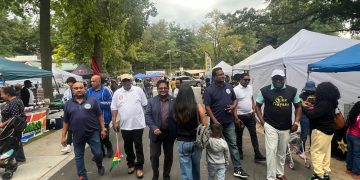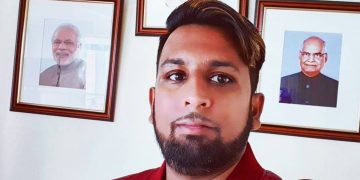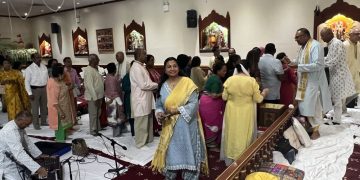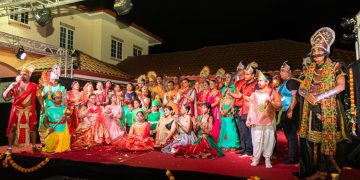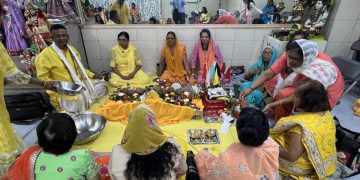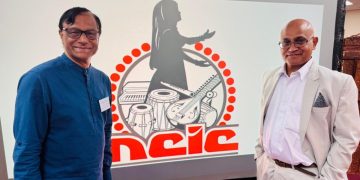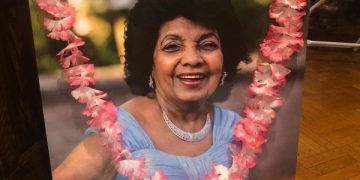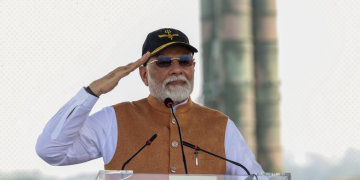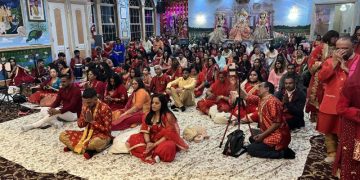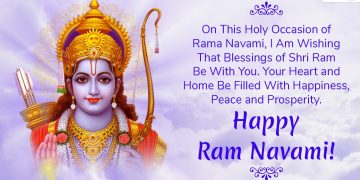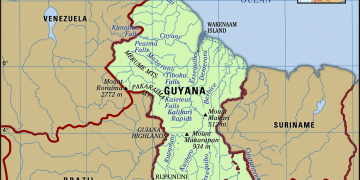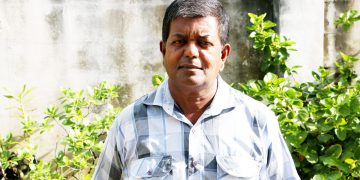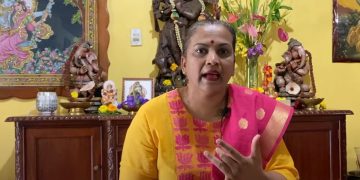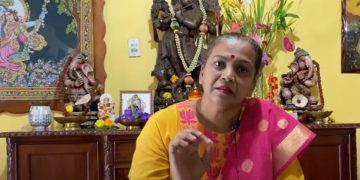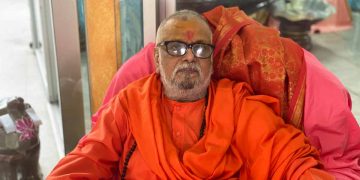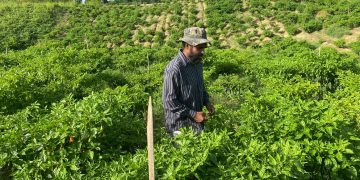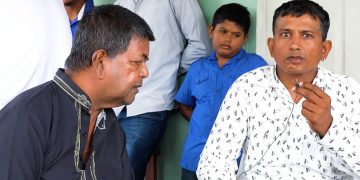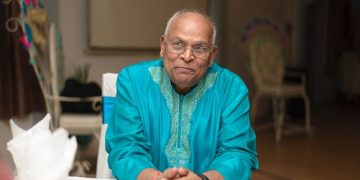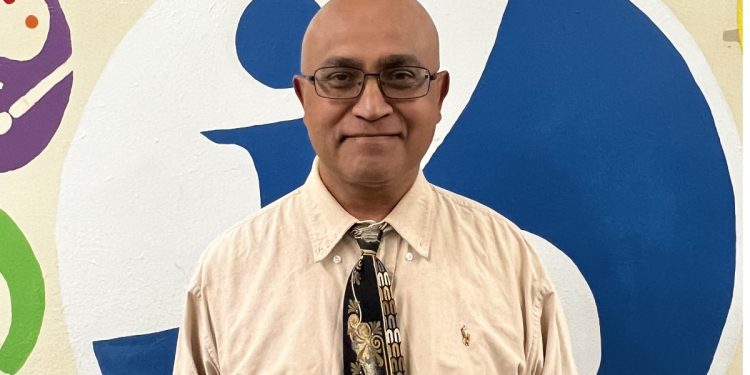Cultural persistence of immigrant groups in any country is a fascinating subject of study. People travel and settle abroad largely for economic reasons (betterment). Culture is far removed from their mind; they are more interested in economic survival – work, pay bills, eat basic foods in order to save to pay living expenses and send remittances to relatives left behind. Yet Indian culture survives. The preservation of Indian culture is largely due to Hinduism which maintains traditional practices.
Although Indians are no longer treated as an immigrant group in Guyana because they have been there for over 187 years, it is amazing that a group of people new to a society has been able to retain their traditional culture especially in a completely strange place like Suriname, Trinidad, and Guyana. It is a fact that Indians were not allowed to publicly celebrate their identity or culture during indentureship and were marginalized and denied cultural affirmation by the colonial rulers and creole successors who governed after the Europeans granted independence. In spite of facing discrimination in all facets of life, including religion, language, music, and being oppressed by the colonial masters and the competing Africans who were freed from slavery, the Indians in all three countries have tenaciously held on to elements of their Indian heritage as practiced in India. Indian resilience, a push back against creolization, their adaptability and creativity have all combined in cultural preservation.
Their cultural preservation allow them to make a significant contribution to the national culture, and in so doing they have left an indelible cultural mark in Guyana and in the Guyanese diaspora in USA, Canada, and UK and even in other societies closer at home like in St. Lucia, Grenada, St. Martin, in border areas in Venezuela. The Indian contribution to culture in Guyana is not dissimilar to that of Indians in Suriname and Trinidad and their diasporas. Indian Surinamese have a strong cultural influence in Holland and in parts of USA like Florida and New York among Indo-Caribbeans. Trini Indians also have influenced cultural life (cuisine, faith, etc.) in parts of North America and UK. The Indo-Guyanese unique culture in their homeland has contributed significantly to Guyanese society’s rich and diverse tapestry as has Indian culture in Suriname and Trinidad with non-Indians adapting Indian cultural practices.
What is culture? Generally, people think of culture as singing, dancing, and praying. But culture is more than that: It is a total way of life of a group of people. It also includes their habits, traditions, clothing, music, language, songs, food, arts, decorations, architecture, how they worship, their homes, places of worship and beliefs, rituals, practices, shopping, melodies, celebrations including of festivals (Phagwah, Diwali, Eid, etc.), the milieu of rites of passage, anniversaries, sports, fetes or parties, artifacts, charitable networks, among other aspects of life. Culture, however defined, and religion are intertwined and both are tied to the dietary habits and practices of Indians. Indians are restricted in food consumption. Hindus don’t consume beef and Muslims don’t consume pork. Many Hindus are vegetarian. These varied aspects of life are a testament to the Indian community’s commitment to preserving their identity and roots. And this way of life is similar to Indian culture in North India and to some extent in Madras (Chennai).
When the Indians came from India between 1838 and 1917, they adapted to local conditions and retained most traditional aspects of life as practiced in then Madras and in UP and Bihar. This is true of Indian indentured laborers in all parts of the Caribbean and in Fiji, Mauritius, Singapore, Malaysia, South Africa, etc. This culture has been preserved and institutionalized in Guyana and in other places where Indians have formed sizeable proportion of the population. The culture has been handed down from generation to generation. And it has been transplanted to other societies where the Indians migrated such as New York, Florida, New Jersey, Toronto, and other cities in North America as well as in London, and Holland. It is a fact that Indo-Guyanese have shaped national culture in Guyana and Guyanese communities in USA and Canada regardless of ethnicity. Guyana has been hosting many national cultural events and festivals that are largely Indian in scope as practiced by them and brought from India. People of all backgrounds eagerly anticipate and participate in events like Phagwah (Holi), Diwali motorcade, and Eid ul-Fitr celebrations, among others. These festivals bring different people together, of all castes, classes, religions, and ethnicities, fostering a sense of unity and shared cultural pride among the Indians even if they are from different faiths. Indians have been known to partake in each other festivals and religious practices. People of all backgrounds have been known to patronize Indian weddings (Hindu, Muslim, Christian) and religious services where traditional ceremonies are held and foods served. Weddings and pujas are stylized in Bollywood luxury. Homes are beautifully decorated. People are well attired for religious festivals, very attractive to onlookers, all contributing to strengthening of culture with a desire to upkeep practices. Foods or cuisine also contribute to cultural preservation and persistence. Guyana’s seven curries are very popular in Guyana as are the variety of curries and dhals in Suriname and Trinidad. Dhal puri, bara, phulourie, alou pie, baiganie, and various pakoras, are very popular similar to doubles and sahena in Trinidad and the large sized delicious bara of Surinam that are also very popular in Holland. Varied curries and pachounie, and roti, are also popular in the entire Caribbean region enjoyed by non-Indians and in Holland, UK, North America. Rasmalai, gulab jamun, kurma, parsad, kheer, ladoos, ‘vamazelli’ or vermicelli, and an array of other mitai or sweets are also enjoyed by Caribbean people of all ethnicities as well as in the diaspora including by non-Indians. Indians have introduced these dishes or cuisine and desert to people in the communities where they dwell. Rasmalai, rasgula, burfi, and a few other sweets are recent addition to the Indo-Caribbean menu of mitai or desert in North America and UK and Holland.
The Indian culture has persisted in the Caribbean largely because the Indians have chosen to maintain various traditions and practices. Also contributing to cultural retention and persistence are temples, Masjids, Indian organizations, Indian centers, pandits, imams, heads of associations, various kinds of clothing and food shops, religious and cultural schools, restaurants, roti shops, bakeries, bars, clubs, and establishment of various institutions that permit shopping for ethnic products (goods, cooking items, wears, religious items, decorations, etc.). The same holds true of Indian culture in North America and elsewhere in the diaspora. There is a strong cultural relationship (exchanges, visits, etc.) between India and the Indo-Caribbean people and integration with Mother India that have also contributed to cultural preservation and persistence. This connection with India remains integral to Indo-Caribbean vibrant cultural tapestry in the individual countries and the region and in the diaspora.
Ethnic language (Hindi, Bhojpuri, Sanskrit, Arabic, Urdu, Tamil, etc.) also helped in cultural persistence. Indian languages words are used in the local language or dialect, religion, and songs and aspects of or elements in Indian traditions (as in India) in music, dance, cuisine, and arts. Also, Guyanese are proud of their ancestral home in India; there is an emotional attachment. They have maintained strong entertainment contact through Indian filmi and Bollywood movies and songs and visits by prominent stars from India as well as Indo-Caribbean visits to India; many top artistes from Mumbai or Bombay visited Guyana, Trinidad, and Suriname and the diaspora. Indo-Caribbeans patronized these events. Cricket also has brought the Indians together aiding in cultural preservation. The act of coming together and supporting Indian cricket teams in Trinidad and Guyana is an act of culture, an act of ethno nationalism of being proud of identity and of India. Indian Arrival Day celebrations, a national holiday, as well as the observance of varied festivals reinforce Indianness and Indian culture. The strong support of India’s government through its missions (Indian Cultural Centers) have also played a role in the persistence of culture in Guyana and the Caribbean. The Indian Embassies tend to host a variety of cultural events or sponsor various festivals. Through strong transnational linkages with India as well inter-Caribbean Hindu or Islamic linkages, culture is preserved. Members of cultural and religious organizations in Suriname, Trinidad, and Guyana tend to visit each other countries for cultural exchanges – singing and dancing. Cricket teams also visit between Guyana and Trinidad. To promote inter-state cultural contact, musical concerts are promoted by local artistes within the country and inter-Caribbean territories. Indian artistes from the region regularly perform at concerts in the Caribbean and in the diaspora in North America, UK, and Holland. Indian culture also persists through culinary practices. Indian cuisine, adapted by the indentured to local conditions, has also left an indelible mark on Caribbean food even in societies where Indians have an insignificant presence like Jamaica, Dominica, and Antigua. Dishes like roti, curry, dhal puri, doubles, phulourie, alou pie, and an array of sweets have become integral to Caribbean culinary culture not only in Suriname, Guyana, and Trinidad but also in Grenada, Antigua, and Barbados. They are also popular in Aruba, St. Martin, Barbados, St. Lucia, St. Vincent, and elsewhere in the region and in Miami, Orlando, various towns in Ontario, Canada and in British Columbia. Also, Indian music and dance forms have transcended generations and continue to be appreciated by non-Indians as well. Large gatherings tend to patronize chutney concerts and other Indian programs. Classical and modern filmi and Bollywood and chutney songs and dances are much appreciated including by non-Indians. Bhajans and kirtans tend to echo through Hindu services (including Bhagwats and Ramayana kathas) and satsangs in mandirs and homes and under tents in public spaces in Indian communities not only in the Caribbean but also in the diaspora (Florida and New York). Ditto Islamic Qawalis which have not been permitted in masjids or mosques, but Qawalis have been sung in Islamic reading services at home. Ramleela plays also reinforce Indian culture; they are annually staged in Guyana, Trinidad, and Suriname during Navratri. The visits by Ministers of governments from India have helped to cement cultural ties. The recent visits by PM Modi to Guyana in November 2024 and to Trinidad in 2025 have helped to strengthen cultural links with India. Ditto visits by cultural delegations from India to the three countries and to Jamaica and other islands. And cultural troupes as well as Ministers from the three countries occasionally visit India for exchanges. Government of India has granted scholarships for studies in language and religion in India. Also contributing to persistence of Indian culture is chutney and soca music genres, which merge Bhojpuri and Hindi words (lexicons and dialects), allowing Indians an opportunity to understand the meaning of these commonly used words in Hindi and Bhojpuri. Hindi and Bhojpuri words and phrases are used at home or in common parlance. Local Indian music and songs and remix Bollywood songs and Indian dances have gained immense popularity throughout the Caribbean and the Indian Caribbean diaspora. Also, traditional Indian attire, such as colorful saris, vibrant lahengas, and other exquisite garments including kurtha/pajama for females are worn at festivals and even as daily wear. Male garbs (including kurtha and Nehru and Modi suits and jackets are worn at festivals and religious events; some individuals wear them daily or routinely in their normal course of life. Also, contributing to the persistence of Indian culture is the practice of females sporting colorful tika, and married women wearing red sindoor at festivals with many sporting them in daily lifestyle. Even on aircrafts, females have on tika and married women sindoor. Muslims and Christians also sport tika that go with the color of their garb. Hindus tend to host puja at their homes inviting the public including non-Hindus who tend to show tremendous appreciation for Indian cultural practices; this has been ongoing since the end of indenture in 1920. During auspicious occasions, Hindus perform pujas in their homes. Muslims have been known to invite the public to Koran Shariefs going back to the end of indenture. Christian Indians in Guyana host religious services and weddings where Hindu practices tend to be imitated such as lighting agarbati, sharing perfume or atar, serving mohanbhog and traditional Indian delicacies, mitai, parsad, and vegetarian as well as non-vegetarian foods. Muslims cater to the dietary restrictions of Hindus at their festivals. These Hindu, Islamic, and Christian practices have been carried over in the diaspora where cultural institutions have been transplanted. In North America and UK and Holland, Indian culture has persisted because of the interests shown by Indian migrants who have felt it necessary to maintain their identity with their religious practices. Whatever Indian cultural practices exist in the Caribbean have been replicated or duplicated in the diaspora contributing to its persistence or continuation.
Indian culture faces a serious challenge. There are no academic institutions teaching music, Hinduism, and other aspects of culture. Community leaders and politicians must address this challenge. Indian leaders, Hindus in particular, must show greater interest in the culture and not use or exploit Hindus for political gains.
*The content for this article was obtained from paraphrasing and several sources.













